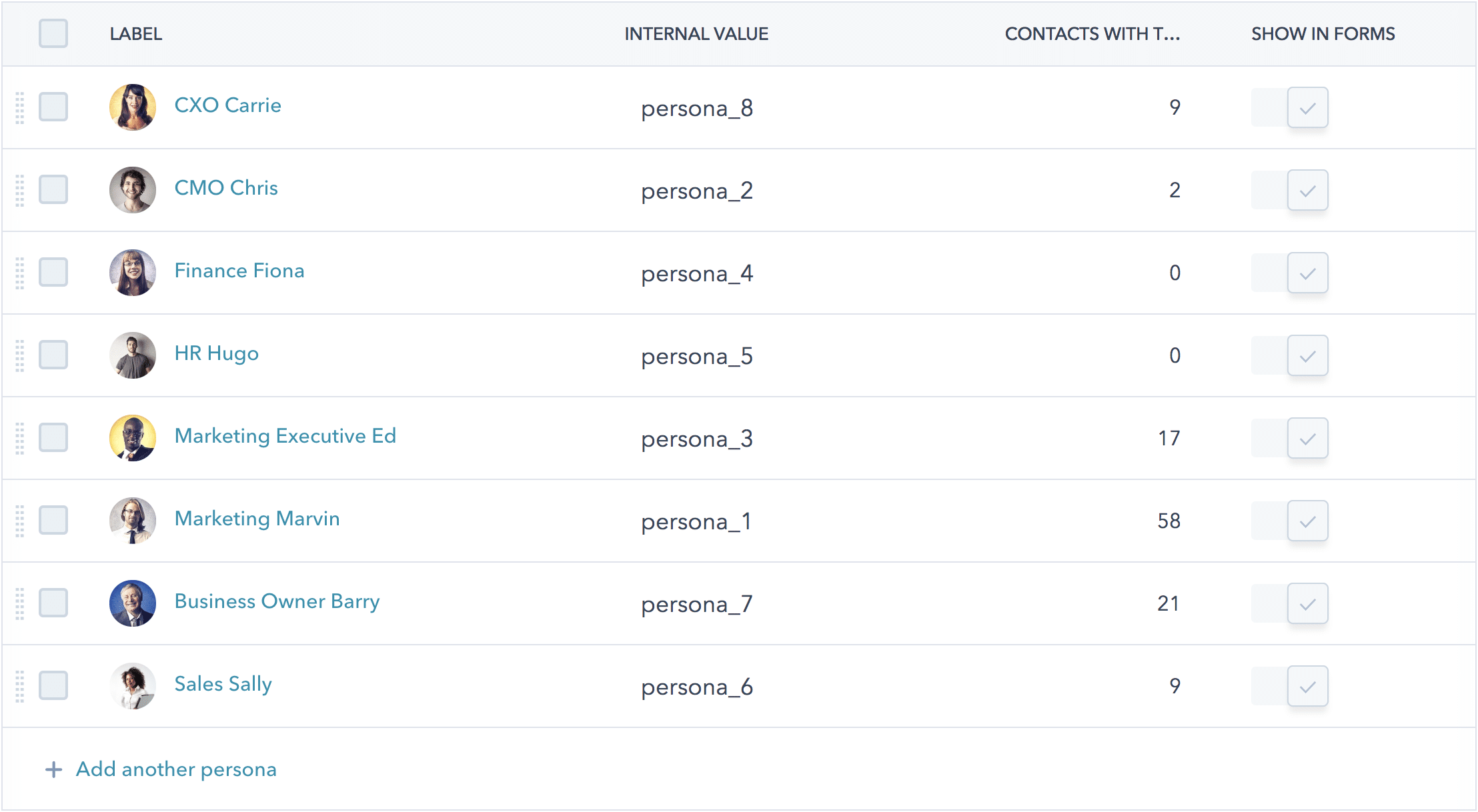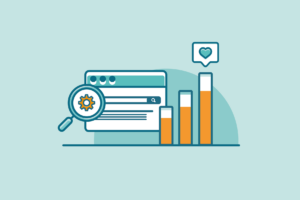
A buyer persona is a projection of your ideal customer, based on data about your current customers and your industry.
It is a way to better understand the demographics and psychographics (motivations, goals, problems etc) related to your target audience. In short it helps you to be an empathetic business, a virtue that should be at the core of your marketing and sales efforts.
While buyer personas are semi-fictional representations of your ideal customer, it’s important to note that they are also based on the feedback of real customers, which is what makes them so valuable.
Why bother with buyer personas?
Data and research-driven empathy enable you to create campaigns and content that will genuinely help your audience, which leads to them engaging with you, which in turn gives you the opportunity to build a mutually beneficial relationship: your customers find the best ways to solve their problems; you gain new business, trust in your brand and hopefully, happy customers who will return and promote you.
Buyer personas are important because they give you detailed insight into the people you are trying to reach, which makes doing that so much easier. If you know what your customers need and want, what they are concerned about and what might stop them from buying your product/service, you have a genuine advantage over competitors who don’t have that information.
What are buyer personas used for?

Although buyer personas are semi-fictional, they are based on real data, which allows you to better understand your target audience. Understanding their behaviours, needs and concerns allows you to personalise your campaigns in order to offer as much value as possible.
There are a number of reasons why it wouldn’t be beneficial to target certain people, so it can be helpful to have a negative buyer persona in place to save your team time trying to sell to them.
Benefits of using a buyer persona
There are numerous benefits to using well-defined buyer personas, so let’s recap the reasons to use personas in your business:
- Personas make it much easier to be empathetic to your customers’ needs - to understand what they need and want
- You know where to target your customers to get the best response to your campaigns
- Personalised campaigns drive 18 times more revenue than broadcast emails
- Using personas - and negative personas - makes it easier to improve the quality of your leads and know which to pursue
- Your entire organisation has an immediate understanding of a customer type thanks to personas
- As well as making it easier to create useful content, knowing what your customers want makes it easier to develop helpful new products and services
How many buyer personas should I have?
In the inbound marketing process you can have as few or as many personas as you like. This really depends on your business and your customers. It’s recommended to start with one core persona, before going on to create more. And while for many businesses multiple personas will be useful, it’s important that there are clear distinctions between them.
Once you have analysed the data you have gathered using the methods discussed above, you should be in a good position to create well defined personas who you can easily distinguish from one another.
The aim is to create a personalised experience that satisfies your ideal customers, and well constructed personas will give you the best chance to do that.
It’s also important not to go ahead with a persona if you don’t have enough information on them. If you can’t see the persona clearly, don’t use them.
At Aira we use a number of different personas we've built over time, including those below. We'll take a closer look at one of these personas shortly.
How to create a buyer persona
Research
Before putting together a buyer persona, you need to conduct thorough research into your existing customers, as well as those outside your database who might be a good fit for your target audience. Often, enlisting the help of external consultants or inbound agencies can help during this process.
You should conduct surveys, polls and interviews to discover their demographics and psychographics. There are various ways to do this, from social media polls and email surveys to in-person or phone interviews.
Capture forms on your website are another good way to gather information about existing customers. You should also use social listening to see what people are saying about your brand, and you should monitor your competitors to see how they interact with their audience.
Your website analytics is another great tool for building a buyer persona. It tells you where your visitors come from, what keywords they have used to find you (if you can get this data), how long they have been on your site, which content assets they have engaged with and much more.
Thorough, cross-channel research gives you a very good idea of the people you do want to target, as well as those you don’t.
Now you can fill in a buyer persona template...
Buyer persona templates
A buyer persona template is a blank persona that you can fill in with the data you have gathered in the research process. Templates vary in length and content and the fields you include should depend on your business and your particular audience.
It is important, however, to distinguish between a B2C and a B2B persona template. Although based on the same principles you will need to ask a few different questions to properly target business-to-consumers, as opposed to a business-to-business audience.
B2C buyer persona templates
B2C personas differ a little from B2B ones. Here you are selling to a consumer spending their own money and making their own decisions, at their own discretion. This means a B2C persona doesn’t require as much information about their job and their business as a B2B persona. Instead the focus should be more on how they make purchasing decisions and their everyday life. A B2C persona template can include things like:
- Name - to bring your persona to life
- Age
- Gender
- Marital status
- Family size
- Occupation
- Income
- Location
- Education
- Interests
- Challenges - your persona’s pain points and how you can help overcome them
- Personality traits
- Personal goals
- Lifestyle
- Where they go for information - favourite news sources, social media etc
- Real quotes - gathered during the research process
- Objections - common objections/concerns raised regarding purchasing your product/service
B2B buyer persona templates
B2B persona templates also look at the individual, but they pay more attention to the their job, the company they work for, their industry and how they interact with their business. It’s worth noting that the persona is not always in charge of purchasing decisions, so this should be explained in the persona if so. A B2B persona can include:
- Name
- Age
- Gender
- Job title
- Company
- Whether a decision maker
- Industry
- Salary
- Education
- Goals
- Challenges
- Marketing message/strategy - How you would communicate your solution to their problem
- Elevator pitch - elaborate on your marketing message to sell your product/service to this persona
- Real quotes
- Objections
How to use a buyer persona
Buyer personas are not just marketing exercises and there are a number of ways they can be used to increase your traffic and improve your conversion rates.
For instance, rather than send out a lead nurturing email to all your contacts, you can divide your database into persona types and then send a tailored message or piece of content to each segment. With negative personas you can also remove leads not worth pursuing from your contacts, saving your team time and money that can be used more effectively.
By focussing on your personas, as well as the different lifecycle stages your prospects go through in the buyer’s journey, you can put together effective, targeted content that will be useful and relevant to the people you want to do business with. Here are just a few other examples of ways you can put your personas to use:
Retarget your advertising
If you know where your personas prefer to spend their time online - their favourite news sources, blogs, social media - you will be able to focus your advertising efforts where they will be most effective. Retargeting your approach using personas could be a shrewd move to improve your advertising ROI.
Reallocate your team
If you have social media marketers monitoring Facebook and Twitter but your personas spend their time on LinkedIn, it may well be worth shifting the focus there. Make sure your team hangs out where your audience does so you can see what they’re saying and respond promptly to complains, comments or praise.
Create content for specific personas
Buyer personas give you a good idea of what your audience is interested in and what they engage with. This makes it easier to create content that will solve their problems. You should know from your personas what content format each persona prefers, so you should have a good outline of the content you need to put together, whether that’s a video guide, an ebook or a series of blog posts.
Negative buyer personas
Where a buyer persona is a person your business wants as a customer, a negative buyer persona is a projection of a customer that you don’t want. Some leads just won’t be a good fit for your business. This could be, for instance, because they don’t have the budget for what you are offering, they might be engaging with your content purely for research purposes, or they might be too expensive to acquire as a customer.
Examples of buyer personas
Looking at examples of buyer personas can be really helpful when putting your own together, so here’s a persona that Aira created for a persona type we regularly deal with. Because we’re digital marketers this is obviously a B2B persona, and we’ve added as much detail as is useful to us. You’ll have to decide the level of detail you need for your own personas. But now, meet… Marketing Marvin.

Persona description: Marvin is a primary target client. He works in a business with a turnover between £1-20 million. He has numerous goals, which are all based on customer generation. The more enquiries/leads he can generate, the more successful he will be in his role.
Job titles: Marketing manager, marketing director, head of digital, digital marketing manager
Goals: Increase sales via online and offline channels, increase leads and enquiries, increase brand awareness and drive qualified leads through to the sales team. His personal goal is to reach chief marketing officer or another CXO.
Challenges: Justify return on spend across online and offline marketing channels.
Demographics
Age: 25-40
Income: £35-70k
Education: Degree educated
Location: UK
Story: Marvin is often found reading industry blogs and attending industry events, in search of information.
He is often time-poor, though not to the level of a CXO.
He’s very results-driven and spends his time developing and executing strategies, implementing and managing projects and ensuring his team meets budget and deadline constraints.
Marvin and his team have expertise in digital marketing and oversee it in-house, but may need to outsource certain tasks due to lack of time or resources. For example he might contact Aira for a link building campaign or a technical SEO audit.
How to apply this information
There are a few ways we can try to target Marketing Marvin. We know that he’s a manager, he’s interested in anything related to digital marketing and his goals are to increase leads and enquiries, so we should create content inline with that information. We also need to create content that is tailored to the different stages of his buyer’s journey. Here are some blog posts that would fit each stage:
| Awareness | Consideration | Decision | |
|---|---|---|---|
| Thought process | My traffic has dropped | I need to increase my website’s traffic | Getting an SEO audit would help me to improve my strategy |
| Possible search queries | ‘sudden drop in traffic’, ‘traffic drop’, ‘why has my traffic dropped’ | ‘increase website traffic’, ‘drive website traffic’ | ‘seo audit cost’, ‘seo consultation’ |
| Blog post title | 5 Reasons Why You've Seen a Sudden Drop in Website Traffic | 7 Ways to Drive Website Traffic with Limited Time | How Much Should an SEO Audit Cost? |
Now you know how to create a persona and you’ve seen an example that we actually use, the next stage is to build your own. To help you do this we’ve created our own B2B and B2C buyer persona templates, that you can download below.
Download our buyer persona templatesMarvin would also be interested in industry news, reports and other insight on the best practices and tactics in digital marketing. We wouldn’t limit ourselves to blog posts though, and could also target Marvin with relevant ebooks, videos, webinars, and even invites to industry events (once we have his information) such as our conference MKGO.
Take a look at our article on inbound marketing tactics to discover complementary ways to create personalised, targeted campaigns, and check out these inbound examples to see how successful this approach can be.
If you're interested an inbound marketing consultation or you have any other questions, just give us a shout.






